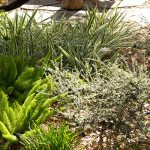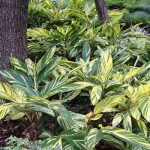The understory is often seen as the underdog of the plant world. But in reality, the understory is the workhorse of a forest, facilitating growth for all species and permitting new species to become established.
All foresters know that healthy forests contain what are called multi-layer canopies. Even forests that are habitually burned by nature or man will have naturally forming layers of shrubs and herbaceous species. These layers work together to encourage nutrient recycling and reproduction, as well as interactions with wildlife.
The collection of small trees, juvenile overstory trees, shrubs and herbaceous plants is frequently referred to as the understory. These plant species never quite become as famous as oaks, pines, roses or bluegrass, but nevertheless are important for producing flowers, fruit and cover for wildlife, as well as assisting in the formation of nutrients and new seedlings.
Leaf and twig litter from these multi-layers slowly decay into organic matter and nutrients. If the understory plants aren’t present, the likelihood of the litter washing or blowing away increases. Also, by retaining moisture the overstory and understory encourage increased decay by the macro and microorganisms. The cooperative nature of each layer allows the nutrients to be recycled slowly without waste or leaving the ecosystem.
Likewise, understory plants prevent the soils from drying out by shading and reducing wind movement, thus facilitating growth for all species and permitting new species, which require higher levels of soil moisture, to become established. Nature is not static. As one plant community becomes established, grows and lingers, it provides the essentials of nutrition and moisture the next community requires.
Finally, the understory provides two rather important factors of wildlife management: shelter and food. The combination of overstory and understory provides the perfect venue for protection against predators and the elements – cold, heat, rain and sun. Escape is as simple as ducking into the mass of shrubbery or under large leaves.
Understory is frequently the site of the greatest variety of species: some permanent, some transitory. Greater variety of plant species creates a greater variety of food sources for wildlife. Whether it’s milkweed for monarch butterflies or possumhaw for birds and mammals, understory vegetation is critical for the survival of many species.
So, you can choose a barren sterile monoculture of lawn and the three same shrubs and two trees, or you can subscribe to a vision of multiple species inhabiting multiple layers of canopies that offer multiple benefits to humans, plants and wildlife.




